Deaf Players of the Early 1900s Had a Big Impact on Baseball
In 1901, there were more deaf players on Major League Baseball teams than there have been in the 116 years since that time. They strongly influenced the game at the beginning of the 20th century, which I learned more about from reading the book Havana Heat by Darrell Brock. Strangely, very few deaf players have played baseball at that level in the years since, leaving questions about why their impact peaked and then fell.
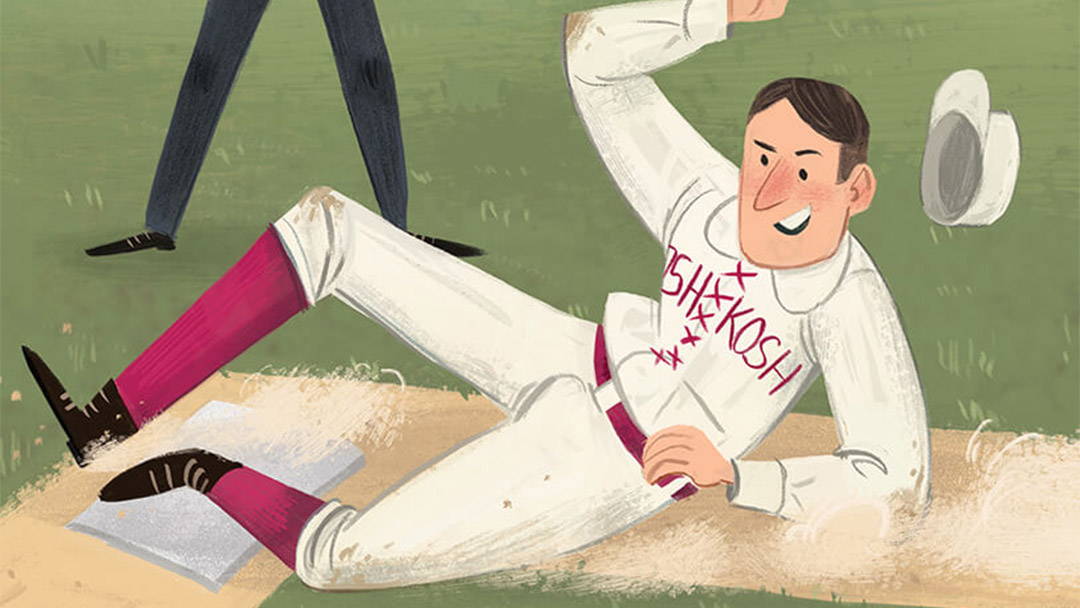
An artist's depiction of William Hoy, one of the first and best deaf players in the major leagues. (8)
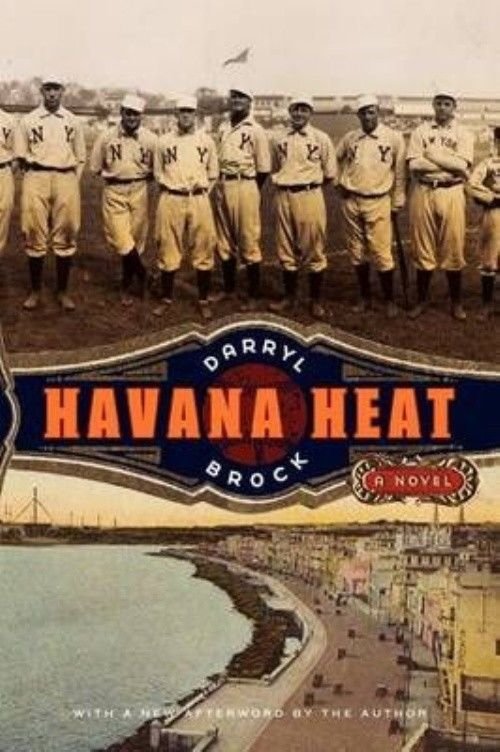
Cover of Havana Heat book.
Havana Heat is a novel that follows a portion of the life of Luther Taylor, one of the greatest deaf-mute athletes of all time. He was a pitcher for the New York Giants at the peak of their glory years, helping them win two league pennants and the 1905 championship. Brock’s story fictionalizes a trip that Taylor (probably never) took with the team to Havana, Cuba, in which he met and helped a deaf boy in Cuba. It’s a good book for a lot of reasons, but I am most thankful for the way that it illuminates the contributions of these deaf athletes of the early 1900s. You can call me a lifetime baseball fan and a student of history, but I would never have known about these players if not for Brock’s book. (1)
Baseball for Dummies
Around the turn of the century, as baseball’s popularity grew in the United States, there were a number of deaf athletes on big league teams. Nicknames have always been a big part of the sport and back then, they were used to typecast certain players. As Brock’s book points out, left-handed pitchers often were nicknamed “Lefty”, short players were called “Shorty”, German players were “Dutch”, and deaf players all carried the nickname “Dummy”.
The two most successful deaf players of that era were William “Dummy” Hoy and Luther “Dummy” Taylor. The nickname seems quite derogatory to us today, since deaf people are not stupid. They lack the sense of hearing that many of us take for granted. But Hoy and Taylor chose not to fight their nickname. Instead, they used it as motivation to work harder and show the world what they could accomplish.
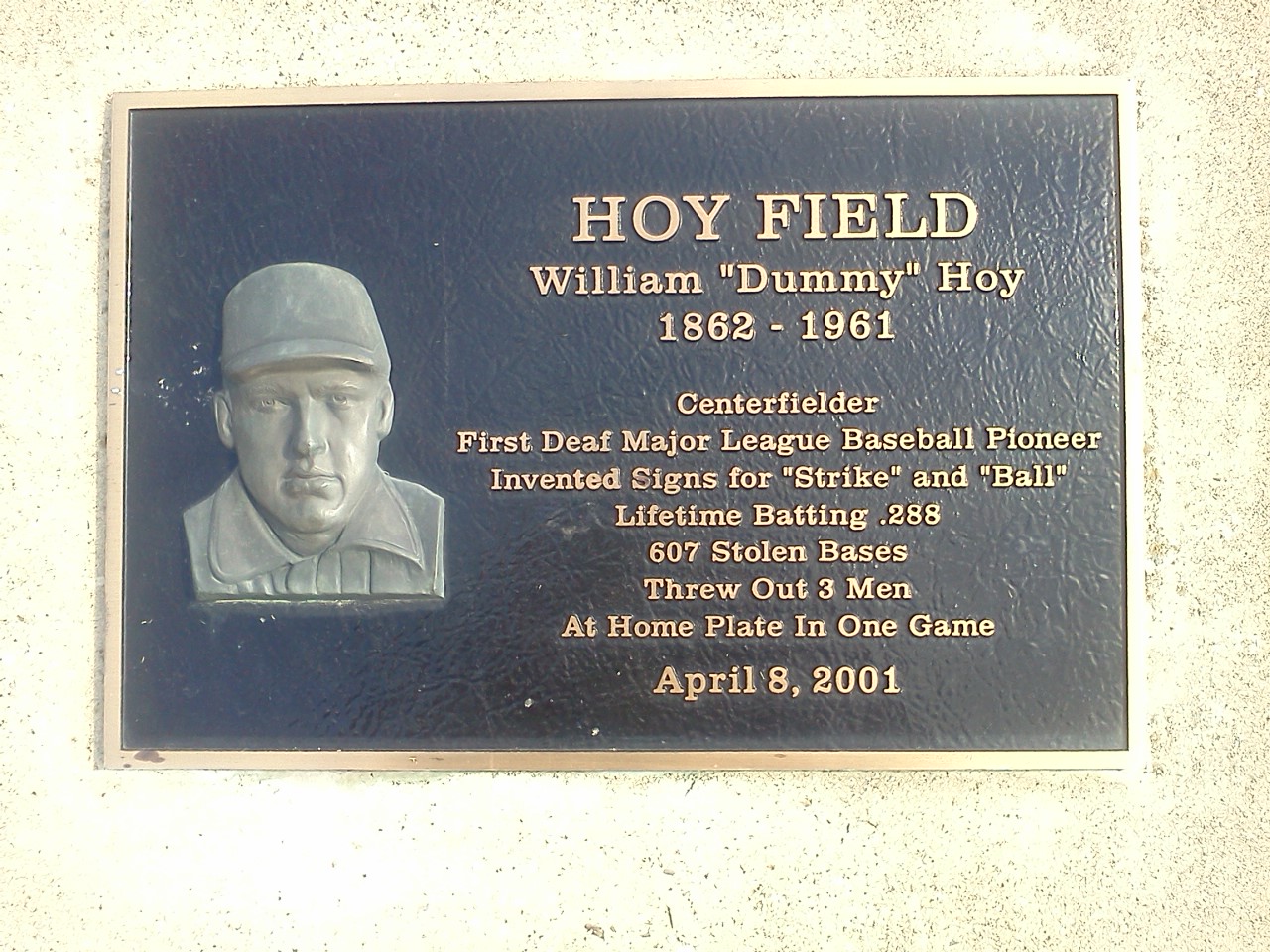
Hoy Field's Dedication Sign.
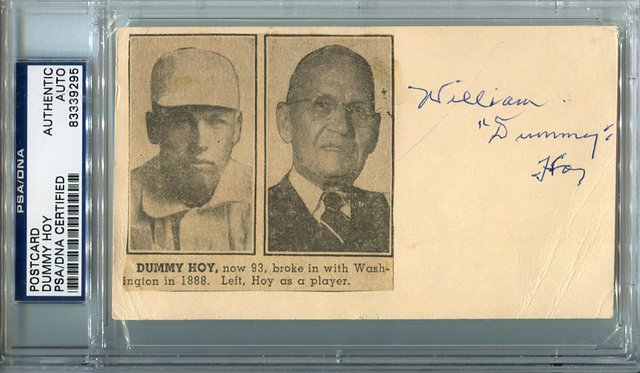
Hoy Signed Card.
In the 1880s, there were two other deaf-mute players, but baseball’s first deaf star was Dummy Hoy. From 1888-1902, Hoy played for eight different teams, finishing with a .288 batting average, 2044 hits, 1426 runs, 725 runs batted in, 607 stolen bases, and records for the most games played in center field and the most career putouts by an outfielder. Hoy is a member of the Cincinnati Reds Hall of Fame; the field at Gallaudet University (a congressionally-chartered university for the deaf and hard-of-hearing) is named for him. (2, 3)
Luther “Dummy” Taylor, the real-life pitcher who is the main character in the Havana Heat novel, was the second legitimate star who emerged from the deaf community. Taylor once faced Hoy in a game, the first time that two deaf players squared off against one another in a Major League baseball game. In 1904, Taylor won 21 games, and in 1906, he finished with a lower earned run average than his two Hall of Fame Giants teammates Christy Mathewson and Joe McGinnity. They won two pennants and a World Series title. Taylor played from 1901-1908, finishing his career with a record of 116-106, a 2.75 earned run average, and 767 strikeouts. (4)
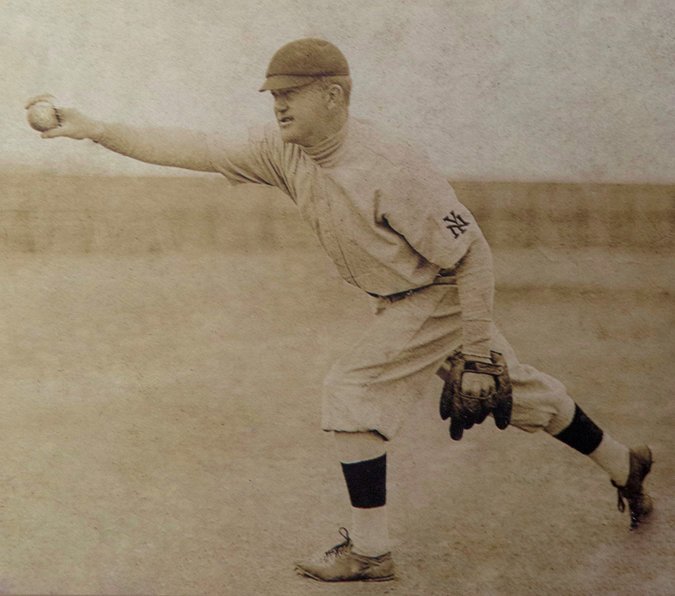
Luther Taylor Pitching. Deaf Cultural Center.
There were other deaf players at that time also. But in the years since, there have been very few.
The New York Giants: Nice Guys Who Finished First
In 1901, the New York Giants’ pitching staff included three deaf players, Dummy Taylor, Dummy Deegan, and Dummy Leitner. There were other deaf players around the same time on other teams. Since then, the only deaf players I have been able to find were one in 1914, two in the 1940s, and one in 1993. (4)
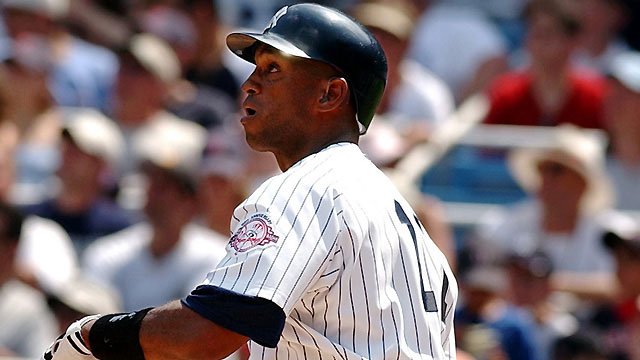
In 1993, Curtis Pride became the first deaf player in more than 50 years to play a full season in the major leagues.
Even if there were a few more mixed in over the last century, it’s unlikely that baseball has had anything close to this level of representation by disabled players at any time in its history.
So why was the early 1900s such a high water mark for deaf players? They faced discrimination and disdainful nicknames, but the leagues, teams, and fans could be quite welcoming also. This certainly was the case with Taylor’s New York Giants, which employed a number of deaf players in that period. They also won championships during the same period with great team chemistry and a manager who brought out the best in his players.
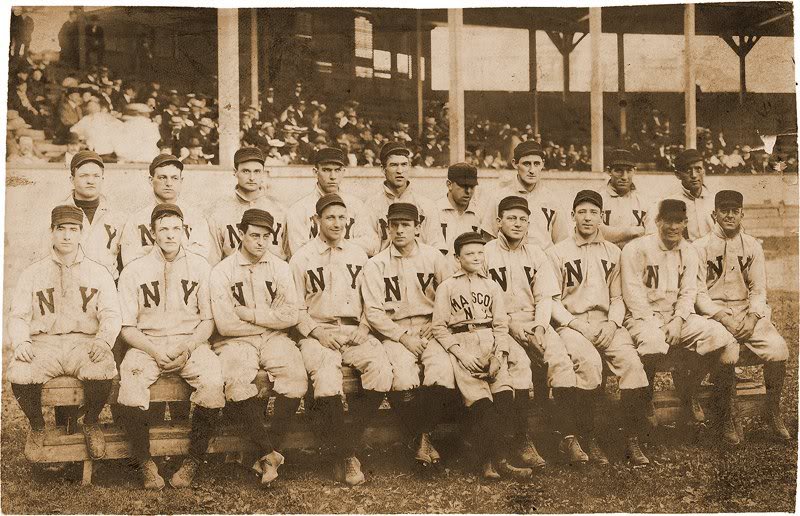
1905 New York Giants. Taylor at top left.
As biographer Sean Lahman wrote, “The Giants didn’t just add Taylor to their roster; they embraced him as a member of their family. Player-manager George Davis learned sign language and encouraged his players to do the same. John McGraw did likewise when he took over as Giants manager.” (5)
Taylor’s teammate Fred Snodgrass later added that, “We could all read and speak the deaf-dumb sign language, because Dummy Taylor took it as an affront if you didn’t learn to converse with him. He wanted to be one of us, to be a full-fledged member of the team. If we went to the vaudeville show, he wanted to know what the joke was, and somebody had to tell him. So we all learned. And we practiced all the time.” (6)
Manager John McGraw liked to keep Taylor in the dugout during games that he wasn’t pitching. He was the team clown, he spooked other teams with the sounds he made, and he also could curse out the umpires in sign language without them knowing. But one of the umpires, Hank O’Day, had a deaf parent and understood sign language so he knew that Taylor was calling him blind as a bat. The umpire signed back to Taylor that he was ejected from the game: “You go to the clubhouse. Pay $25.” (7)
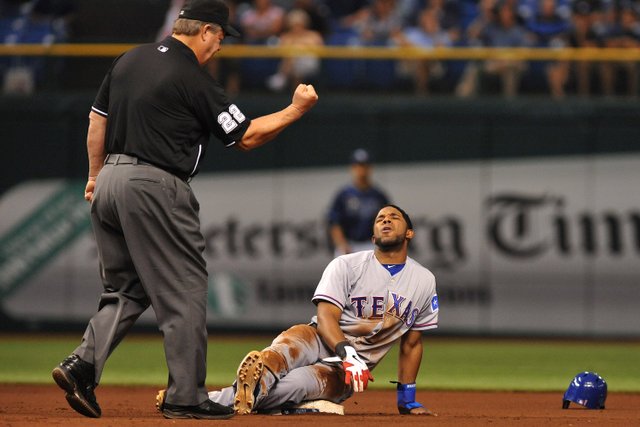
An umpire signalling that a runner is out.
Hand signals of various sorts have been important in baseball for many years. Catchers signal to pitchers about what kind of pitch to throw. Coaches signal signs to baserunners. And umpires throw hand signs for strikes, balls, and when a runner is safe or out. Some historians believe that umpires’ hand signals trace back to William “Dummy” Hoy, who reportedly asked umpires to make hand signals in his games. (8)
Other Reasons for the Early 1900s Peak in Deaf Players
Maybe so many deaf players succeeded in those days because Hoy and the early deaf players served as role models for others. And perhaps they proved to the teams of the day how good deaf players could be, prompting those teams to scout more players from schools like Kansas School for the Deaf, which was Luther Taylor’s alma mater and the school he returned to work at once his baseball career had finished. (1)
Also, within a few years, George Herman “Babe” Ruth became the game’s first legitimate slugger, belting long home runs that would change the game forever. Whenever the game changes, teams start looking for different kinds of talent, and Ruth’s rise signaled the end of an era when games were won with fundamental skills and fewer runs.
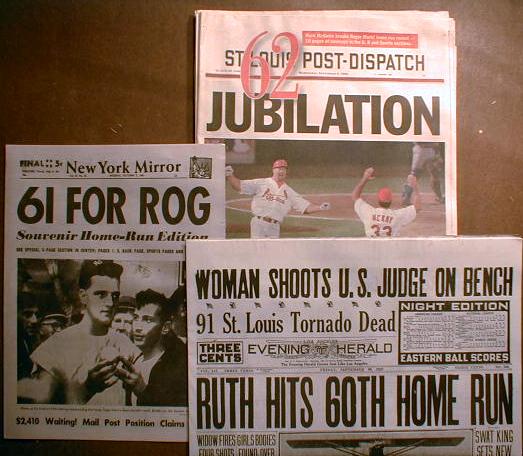
The live ball era began in earnest with Babe Ruth.
That’s not to say that deaf players could not have succeeded in the live ball era that Ruth ushered in. There simply were fewer people (handicapped or not) who had the athletic skills to succeed at such a high level, so perhaps even a community with some fundamentally good players had a harder time finding them roles in the major leagues. And later, when players of non-white races entered the game, there was a new influx of talent that made the leagues even more competitive. Still, one would have expected at least a few more top quality athletes would have emerged from the ranks of the deaf community; their almost complete absence on MLB rosters seems to indicate the disappearance of that career pathway to baseball that once existed for the Hoys and Taylors.
If I had to guess, I’d say that all of these reasons probably factored into the larger number of deaf players in the early 1900s. Particularly notable was the welcoming attitude of that team many of them played for, the New York Giants. And perhaps that team’s practices provide a model for how professional sports teams today could do a better job of encouraging and attracting the best athletes from non-traditional communities. Disparaging nicknames aside, when everyone is as open and accommodating to people from other backgrounds, it benefits society as a whole.
Sources:
(1) Brock, Darryl. Havana Heat (University of Nebraska Press, 2000).
(2) https://en.wikipedia.org/wiki/Dummy_Hoy
(3) https://sabr.org/bioproj/person/763405ef
(4) https://en.wikipedia.org/wiki/Dummy_Taylor
(5) Lahman, Sean. Dummy Taylor, in Tom Simon, ed., Deadball Stars of the National League (Brassey's, 2004).
(6) Ritter, Lawrence. The Glory of Their Times (HarperCollins, 1966).
(7) https://www.nytimes.com/2014/10/23/sports/baseball/world-series-2014-a-silent-link-between-the-giants-and-kansas-city.html
(8) Top image is cover art by Jez Tuya for the book The William Hoy Story by Nancy Churnin (Albert Whitman & Co., 2016). Other image sources referenced or public domain.
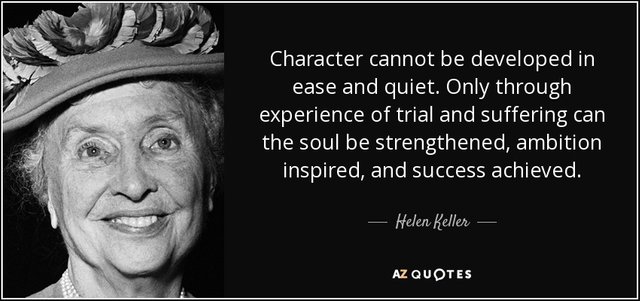
This is amazing part of history that is not often talked about or celebrated. I find it confusing that over a century ago, disable athletes were thriving, but that so much discrimination still exists today in sports in different forms.
Very interesting article! Thanks.
I think baseball is one of the few sports where a deaf player could actually excel. There is not much verbal communication required, players rely more on "sign language" from the coaching staff. Also, not being able to hear could be a benefit as you would not have to endure the crowd noise or trash talking opponents (just a thought).
Yes, it seems quite possible. Audible calls can be more important in some other sports.
@donkeypong - It is often observed that, when one of the bodies senses is impaired, the other senses become keener. Perhaps the deaf and dumb athletes had a keen eye for the ball for this reason and hence became successful?
Of course, as you have correctly pointed out, the 'trend' created by the welcoming attitude of the host teams and the iconic success of the two early on 'dummy' players could have resulted in a spurt of 'dummy' players coming up. As you have further pointed out, abilities other than just technical good work and a good eye (muscle power to slug out the ball over the walls for instance) and the resulting 'power play' could have ended that 'trend'.
Very nice article and with lot of background research. Thanks for sharing.
Upvoted full
Regards,

@vm2904
I read an article by @madmaxfury where he talked about one of the greatest female astronomers ever. Turns out she (and the other greatest female astronomer) was deaf.
Perhaps, where lack of sight force more cognition to be focused on hearing and smell, maybe lack of hearing promotes total concentration on what's in front of you?
Great post! This is another great quote: The only thing worse than being blind is having sight but no vision. Helen Keller
Best wishes, - @splendorhub
That's a good one also. She had a lot of wise things to say.
Indeed! @splendorhub, such a great thing you shared that here. It relates to the blog at the same time the words were powerful. Thanks for sharing.
I'm saving this for future use.
Thank you and best wishes :)
i must say nice comment with pic
Thank you:)
Wow... Although baseball isn't popular in the Philippines, somehow I'm very interested in it. And it's just so amazing how these deaf players from the 1900s contributed to the world of baseball... :) I'm personally interested in the hand signs that the catcher gives to the pitcher. I think, the "battery" would always be the core of the game, but of course... the core wouldn't be able to move forward without the other players. Everyone has his vital role in the game, no matter the disability... If you really want something, you can definitely do it!! ^^ I want to watch baseball live someday... hihi ^^ Thanks for sharing.. would love to read the book/novel you mentioned above, too... ^^
Funny you mention baseball in the Philippines. Where I live in Calbayog City (Samar), we have a department store that carries baseballs, softballs, bats, gloves, etc... and we don't have a baseball field for hundreds of kilometers that I know of!
For real???? Haven't seen any baseball stuff in Cebu... T_T I'd love to at least practice pitching or batting.. hahaha xDDD it'd be awesome to have even a batting center, but to no avail... T_T Nice to meet you here! ^^
Now I have half a mind to set-up what we used to call a "sand-lot" ball field in Calbayog City! I brought Ultimate Beach Frisbee to the city, might as well work on baseball!
That would be awesome... :) If you did, it might even influence some parts of Cebu... and I can finally try playing or watch people playing it!!! hihihi ^^
Still working on bringing Outdoor Racquetball here... having a difficult time generating any interest!
Racquetball is somehow interesting, too... But I don't see any indoor/outdoor racquetball place here, either.. xD
None! But like I said, I'm working on it. Check out my latest post and help me out by resteeming! Thanks!!!!!
Great post! I myself am a huge fan of baseball, as I have played for almost 20 years, including at the collegiate level. I wasn't aware of the amount of deaf players that have played throughout history.
I like this article that I have had to read it twice already just trying to understand how easy it is for one to break down because they are challenged. These players could easily never make history because they are deaf, but through their suffering and trial they achieved success and have a place in the books of Baseball records. And you capped it off with Helen Keller's words.
Weldone boss.
Amazing, I never even thought about it. Deaf people playing baseball. I'm from UK so baseball is not a sport I follow. I think it is fantastic that we have organisations that strip the prejudices of disability and given those who suffer from physical and mental disabilities the opportunity to take part in what able-bodied people can take for granted, A simple game of Football, soccer, baseball basketball. Today we see more and more sports played by disabled people like Blind football, deaf baseball, Swimming, basketball and we only have to look at the Paraolympics & Invictus to see the progression of the sports. This gives such a boost to those living with a disabilty and also brings HUGE awareness to the public and to the naive (me being one).
Its AMAZING & everyone who is involved in a sport with disability I commend you. Fantastic
That interesting about "strike" and "ball" sign invented by "Dummy", a deaf baseball player. Nice :)
Yeah, it makes so much sense when you think about it, but would never know it without this article.
indeed :)
Yes. Though I have followed the game all my life, I never really thought about how many hand signals there are. Those may have started at this time (some historians say so), though crowd noise may have been another reason they were developed.
The main fact that you want to hide your offensive intentions from the opposition is the main reason "signals" were invented. Now you have defensive signals to communicate without disclosing to the opposition. Deaf players fit right in which made this sport one that they could excell at.
That's certainly a big reason. Umpires' hand signals may have had a different origin, though, perhaps the one suggested here.
Yes, definitely those were intended for the hearing impaired. I guess I was on a different wavelength with signals in general.
Valuable article about deaf baseball players history. Lot of community dont know this sport history if refer to baseball or other sports. But you remind alarm from this post. Absolutely you introduce with use some sources and newspaper article likes etc....
Resteemed your post @donkeypong.